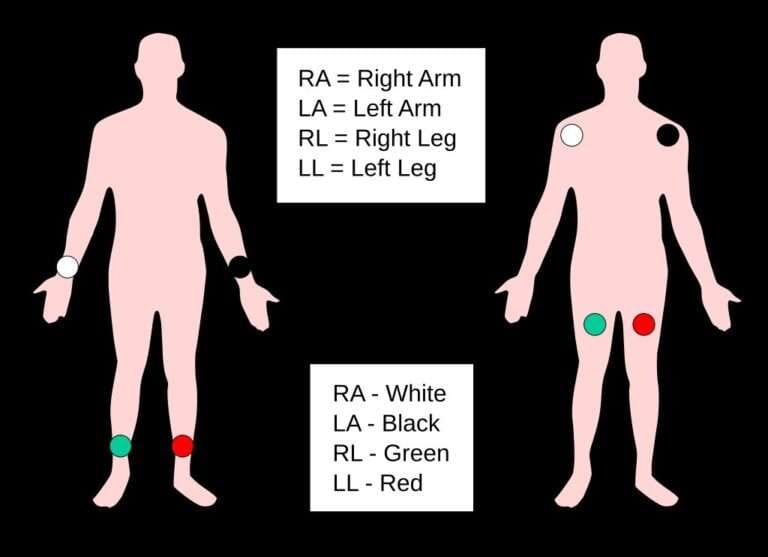What is B2B Brand Storytelling?

In this blog post, will examine real-life examples of successful B2B brand storytelling and provide practical tips on how to implement it in your own business.
The Importance of B2B Brand Storytelling
Building Trust and Credibility: In the B2B space, trust and credibility are paramount. By weaving a compelling brand story, businesses can establish a genuine connection with their audience, fostering trust and building long-term relationships.
Creating a Connection with Your Audience: B2B transactions often involve complex products or services. Through storytelling, businesses can simplify their message and make it more relatable, allowing their audience to connect with their brand on a deeper level.
Differentiating from Competitors: In a crowded marketplace, differentiation is key. B2B brand storytelling enables businesses to differentiate themselves by showcasing their unique values, mission, and vision, thereby setting themselves apart from their competitors.
Components of Effective B2B Brand Storytelling
Understanding Your Brand’s Unique Story: Every business has a unique story to tell. Understanding your brand’s history, values, and the journey that led you to where you are today is crucial in crafting a compelling narrative that resonates with your audience.
Identifying Your Audience: Effective storytelling requires a deep understanding of your target audience. By identifying their pain points, aspirations, and motivations, businesses can tailor their brand story to address their specific needs and desires.
Crafting and Communicating Your Narrative: Once you have a clear understanding of your brand’s story and your audience, it’s time to craft a narrative that effectively communicates your message. This involves selecting the right tone, language, and structure to engage and captivate your audience.
Incorporating Visual Elements: Visual elements such as images, videos, and infographics can enhance the impact of your brand story. By incorporating compelling visuals, businesses can create a more immersive and memorable storytelling experience.
Examples of Successful B2B Brand Storytelling
Throughout this blog post, we will explore real-life case studies of successful B2B brand storytelling. By analyzing the strategies and tactics employed by brands like X, Y, and Z, we can gain valuable insights into what makes their storytelling efforts effective.
How to Implement B2B Brand Storytelling in Your Business
To help you leverage the power of B2B brand storytelling, we will provide practical tips and guidance on how to implement it in your own business. From developing your brand’s story to identifying the right channels for storytelling and measuring its effectiveness, we will equip you with the tools you need to succeed.
Conclusion:
B2B brand storytelling is no longer a luxury; it’s a necessity. By understanding its importance, exploring its components, and learning from successful examples, businesses can harness the power of storytelling to build trust, create connections, and differentiate themselves in the competitive B2B landscape. So, let’s dive in and discover the transformative potential of B2B brand storytelling.
Introduction to B2B Brand Storytelling
In the business-to-business (B2B) world, where companies engage with other companies, brand storytelling plays a significant role in establishing a strong brand identity and connecting with target audiences. B2B brand storytelling involves the art of conveying a compelling narrative that captures the essence of a business, its values, mission, and vision, in a way that resonates with its audience.
In this section, we will explore the fundamental concepts and principles of B2B brand storytelling, providing a solid foundation for understanding its importance and impact. Let’s dive in!
What is B2B Brand Storytelling?
B2B brand storytelling refers to the strategic use of narratives and storytelling techniques to communicate a brand’s message, values, and offerings to other businesses. It goes beyond simply promoting products or services; it aims to create an emotional connection and engage the audience on a deeper level.
At its core, B2B brand storytelling involves crafting a cohesive and authentic story that reflects the brand’s identity, its purpose, and its unique value proposition. It encompasses the brand’s history, its journey, its successes, and even its failures, all woven together in a narrative that resonates with the target audience.
The Power of B2B Brand Storytelling
B2B brand storytelling has the potential to make a significant impact on a business’s success. Here are a few reasons why it is an essential strategy in today’s B2B landscape:
- Creating Human Connections: B2B transactions often involve complex products or services, making it crucial to establish a human connection. Brand storytelling allows businesses to tap into the emotional aspects of decision-making, fostering trust and building relationships with their audience.
- Building Trust and Credibility: Trust is the foundation of any successful business relationship. Through storytelling, businesses can showcase their expertise, industry knowledge, and their commitment to solving their customers’ challenges, ultimately building trust and credibility.
- Differentiating from Competitors: In a highly competitive market, differentiation is key. B2B brand storytelling provides a unique opportunity for businesses to differentiate themselves by highlighting their unique values, culture, and approach, setting them apart from competitors.
- Creating a Memorable Brand Identity: Powerful brand stories have the ability to leave a lasting impression on the audience. When businesses effectively communicate their brand’s story, it helps create a distinctive brand identity that customers can connect with and remember.
Elements of Effective B2B Brand Storytelling
To craft an effective B2B brand story, there are several key elements to consider:
- Authenticity: Authenticity is crucial in B2B brand storytelling. Businesses must stay true to their values, mission, and culture, ensuring that their story reflects the genuine essence of their brand.
- Relevance: Understanding the target audience and their pain points is essential for creating a relevant brand story. By addressing the specific challenges and needs of the audience, businesses can establish a deeper connection and resonate with their potential customers.
- Consistency: Consistency is key in B2B brand storytelling. The brand story should align with all aspects of the business, including marketing communications, customer interactions, and overall brand experience.
- Engagement: Effective storytelling captivates the audience and keeps them engaged. Incorporating elements such as emotions, suspense, and relatable characters can help hold the attention of the audience and create a memorable experience.
By understanding the power of B2B brand storytelling and the key elements that contribute to its effectiveness, businesses can harness the potential to connect with their audience, build trust, and differentiate themselves in the competitive B2B landscape. In the following sections, we will explore the importance of B2B brand storytelling in greater detail and delve into the various components that make it successful.
The Importance of B2B Brand Storytelling
B2B brand storytelling plays a critical role in the success of businesses operating in the B2B space. In this section, we will delve into the importance of B2B brand storytelling and discuss how it can benefit your business. Let’s explore the key reasons why B2B brand storytelling should be a priority in your marketing strategy.
Building Trust and Credibility
Trust is a crucial element in any business relationship, especially in the B2B world. By incorporating storytelling into your brand strategy, you can humanize your business and create an emotional connection with your audience. Sharing your brand’s story, values, and mission helps establish credibility and builds trust with potential clients and partners.
When businesses authentically share their journey, successes, and even failures, it demonstrates transparency and honesty. By openly showcasing your expertise, industry knowledge, and commitment to solving your customers’ challenges, you can instill confidence in your audience and differentiate yourself from competitors.
Creating a Connection with Your Audience
In the B2B realm, decisions are often based on logic and rationality. However, emotions still play a significant role in the decision-making process. B2B brand storytelling allows you to tap into the emotional side of your audience and create a connection that goes beyond the product or service being offered.
By crafting a compelling narrative that resonates with your target audience, you can evoke emotions, such as empathy, inspiration, or aspiration. Sharing stories that highlight how your brand has positively impacted other businesses or helped overcome challenges can create a sense of relatability and foster a deeper connection with your audience.
Differentiating from Competitors
In today’s crowded marketplace, it is essential to differentiate yourself from competitors. B2B brand storytelling provides a unique opportunity to showcase your unique values, culture, and approach, setting your business apart from others in the industry.
By authentically communicating your brand story, you can highlight what makes your business special and demonstrate why potential clients should choose you over your competitors. Effective storytelling helps position your brand as a trusted and preferred partner, making it more likely for prospects to choose your business when making purchasing decisions.
Enhancing Brand Awareness and Recognition
A strong brand story helps create a distinct identity for your business. When your audience remembers and recognizes your brand, it becomes easier to build and maintain brand awareness.
By consistently sharing your brand story across various marketing channels, you increase the chances of being recognized by potential customers. A well-crafted brand story also serves as a powerful marketing tool, as it can be easily shared through word-of-mouth, social media, and other forms of digital marketing, helping to expand your reach and attract new leads.
Driving Customer Loyalty and Advocacy
B2B brand storytelling has the potential to cultivate deep customer loyalty. When your audience connects with your brand on an emotional level, they are more likely to remain loyal to your business over the long term.
By consistently delivering on your brand promise and maintaining the values expressed in your brand story, you can build trust and loyalty with your customers. Loyal customers are also more likely to become brand advocates, sharing their positive experiences and recommending your business to others, which can lead to valuable referrals and new business opportunities.
In summary, B2B brand storytelling is of utmost importance in today’s competitive landscape. It helps build trust, create connections, differentiate from competitors, enhance brand awareness, and drive customer loyalty. By effectively incorporating storytelling into your marketing strategy, you can establish a strong brand identity that resonates with your audience and sets your business apart.
Components of Effective B2B Brand Storytelling
Effective B2B brand storytelling involves various components that work together to create a compelling narrative. In this section, we will explore the key components that contribute to the success of B2B brand storytelling. By understanding these components, you can craft a powerful brand story that resonates with your audience.
Understanding Your Brand’s Unique Story
Every business has a unique story to tell. The first component of effective B2B brand storytelling is understanding and articulating your brand’s unique story. This involves exploring the history of your business, its founding principles, and the journey it has taken to reach its current state.
By delving into the roots of your brand, you can uncover the core values, mission, and vision that drive your business. Understanding these fundamental aspects allows you to craft a narrative that is authentic, relatable, and distinct from your competitors.
Identifying Your Audience
To create a powerful brand story, it is essential to identify and understand your target audience. The second component of effective B2B brand storytelling is conducting thorough audience research. This involves gaining insights into the needs, challenges, and aspirations of your target customers.
By understanding your audience’s pain points, motivations, and decision-making processes, you can tailor your brand story to resonate with them on a deeper level. This allows you to address their specific challenges and position your business as the solution they are seeking.
Crafting and Communicating Your Narrative
Once you have a clear understanding of your brand’s unique story and your target audience, it’s time to craft and communicate your narrative. This component involves creating a cohesive and engaging storyline that effectively conveys your brand’s message.
Crafting your narrative requires careful consideration of various elements, including the tone, language, and structure of your story. It is important to strike a balance between being informative and captivating, ensuring that your audience remains engaged throughout the storytelling process.
Communicating your narrative involves leveraging various channels and platforms to share your brand story. This can include your website, social media, blog posts, videos, and even in-person interactions. Consistency in messaging across all communication channels is crucial to maintain a cohesive brand image.
Incorporating Visual Elements
Visual elements play a significant role in enhancing the impact of your brand story. The fourth component of effective B2B brand storytelling is incorporating compelling visuals into your storytelling efforts. This can include images, videos, infographics, and other visual assets that help bring your narrative to life.
Visual elements not only capture attention but also evoke emotions and make your brand story more memorable. They can help create a visual identity for your brand and reinforce the key messages you want to convey. By strategically using visuals, you can make your brand story more engaging and impactful.
Evolving and Adapting Your Story
The final component of effective B2B brand storytelling is the recognition that your brand story is not static. As your business evolves, your story may need to adapt to reflect new achievements, challenges, or market dynamics.
It is important to regularly revisit and refine your brand story to ensure that it remains relevant and resonates with your audience. By staying attuned to the changing needs and preferences of your target customers, you can refine your storytelling efforts to maintain a strong connection with your audience.
In summary, the components of effective B2B brand storytelling include understanding your brand’s unique story, identifying your audience, crafting and communicating your narrative, incorporating visual elements, and evolving your story over time. By incorporating these components into your brand storytelling strategy, you can create a compelling narrative that engages your audience and sets your business apart.
Examples of Successful B2B Brand Storytelling
To gain a deeper understanding of how B2B brand storytelling can be effectively implemented, it is valuable to examine real-life examples of successful brands that have utilized this strategy. In this section, we will explore three case studies of companies that have achieved remarkable results through their B2B brand storytelling efforts. By analyzing these examples, we can extract valuable insights and learn from their success stories.
Case Study: Brand X
Brand X is a leading technology solutions provider in the B2B space. They have successfully embraced B2B brand storytelling to differentiate themselves in a highly competitive market. One key aspect of their storytelling strategy is highlighting the human impact of their technology solutions. They share stories of how their products have empowered businesses to achieve their goals, overcome challenges, and drive innovation. By focusing on the success stories of their customers, Brand X establishes credibility and showcases the tangible benefits of their solutions. Their storytelling efforts have helped them build a loyal customer base and position themselves as a trusted partner in the industry.
Case Study: Brand Y
Brand Y is a sustainability consulting firm that helps businesses integrate sustainable practices into their operations. They have effectively utilized B2B brand storytelling to raise awareness and drive engagement. Their storytelling revolves around the larger impact of sustainable practices on the environment, society, and the bottom line. Through powerful storytelling, they share success stories of businesses that have implemented sustainable strategies and achieved significant cost savings, environmental conservation, and positive social impact. Brand Y’s brand storytelling approach has positioned them as thought leaders in the sustainability space and has attracted clients who value their expertise and commitment to making a difference.
Case Study: Brand Z
Brand Z is a global logistics company that has successfully leveraged B2B brand storytelling to differentiate themselves in a highly commoditized industry. Their brand story focuses on the reliability, efficiency, and customer-centric approach of their logistics solutions. They share stories of how they have enabled businesses to overcome logistical challenges and deliver seamless experiences to their customers. By emphasizing the human element and the impact of their services, Brand Z has established trust and credibility among their target audience. Their brand storytelling efforts have not only helped them attract new clients but also retain existing ones, as businesses value their commitment to providing exceptional logistics solutions.
In each of these case studies, we see how B2B brand storytelling has played a crucial role in driving business success. By effectively conveying their brand’s unique story, understanding their audience, and crafting compelling narratives, these brands have differentiated themselves from competitors, built trust with their audience, and established themselves as industry leaders. These examples serve as inspiration for businesses looking to implement B2B brand storytelling in their own marketing strategies.
How to Implement B2B Brand Storytelling in Your Business
Implementing B2B brand storytelling in your business requires careful planning and execution. In this final section, we will provide practical steps and guidance on how to effectively implement B2B brand storytelling in your own organization. By following these steps, you can create a compelling brand story that resonates with your audience and helps you achieve your business goals.
Step 1: Develop Your Brand’s Story
Start by understanding your brand’s unique story. Reflect on your brand’s history, values, mission, and vision. Identify the key elements that differentiate your business from competitors and align them with the needs and aspirations of your target audience. Craft a cohesive narrative that communicates your brand’s story authentically and emotionally.
Step 2: Identify Channels for Storytelling
Determine the most effective channels for sharing your brand story. Consider your target audience’s preferences and behavior, and choose channels that align with their communication habits. This could include your website, blog, social media platforms, industry events, podcasts, or even print publications. Each channel should be utilized strategically to reach and engage your target audience effectively.
Step 3: Tailor Your Story to Your Audience
Segment your audience and personalize your brand story to resonate with each segment. Understand their pain points, motivations, and challenges, and craft narratives that address their specific needs. By tailoring your story to different audience segments, you can create a more meaningful and impactful connection with each group.
Step 4: Leverage Visual Elements
Incorporate visual elements into your storytelling efforts to enhance engagement and retention. Utilize images, videos, infographics, and other visual assets that align with your brand’s messaging and evoke emotions. Visuals can help convey complex ideas, create a memorable brand identity, and make your brand story more compelling and shareable.
Step 5: Measure the Effectiveness of Your Storytelling
Continuously measure and evaluate the effectiveness of your brand storytelling efforts. Monitor key metrics such as engagement rates, website traffic, lead generation, and customer feedback. Use analytics tools to gain insights into how your audience is responding to your storytelling initiatives. Adjust your strategies accordingly to optimize results and improve the impact of your brand story.
Step 6: Iterate and Evolve Your Storytelling
Recognize that brand storytelling is an ongoing process. Continually review and refine your brand story to ensure it remains relevant and aligned with your business objectives. Stay attuned to industry trends, customer feedback, and changes in the market landscape. Adapt your storytelling strategies to reflect new achievements, challenges, and market dynamics, ensuring your brand story remains fresh and compelling.
By following these steps, you can effectively implement B2B brand storytelling in your business. Remember, successful brand storytelling requires consistency, authenticity, and a deep understanding of your target audience. Embrace the power of storytelling to connect with your audience, differentiate your brand, and drive business growth.







